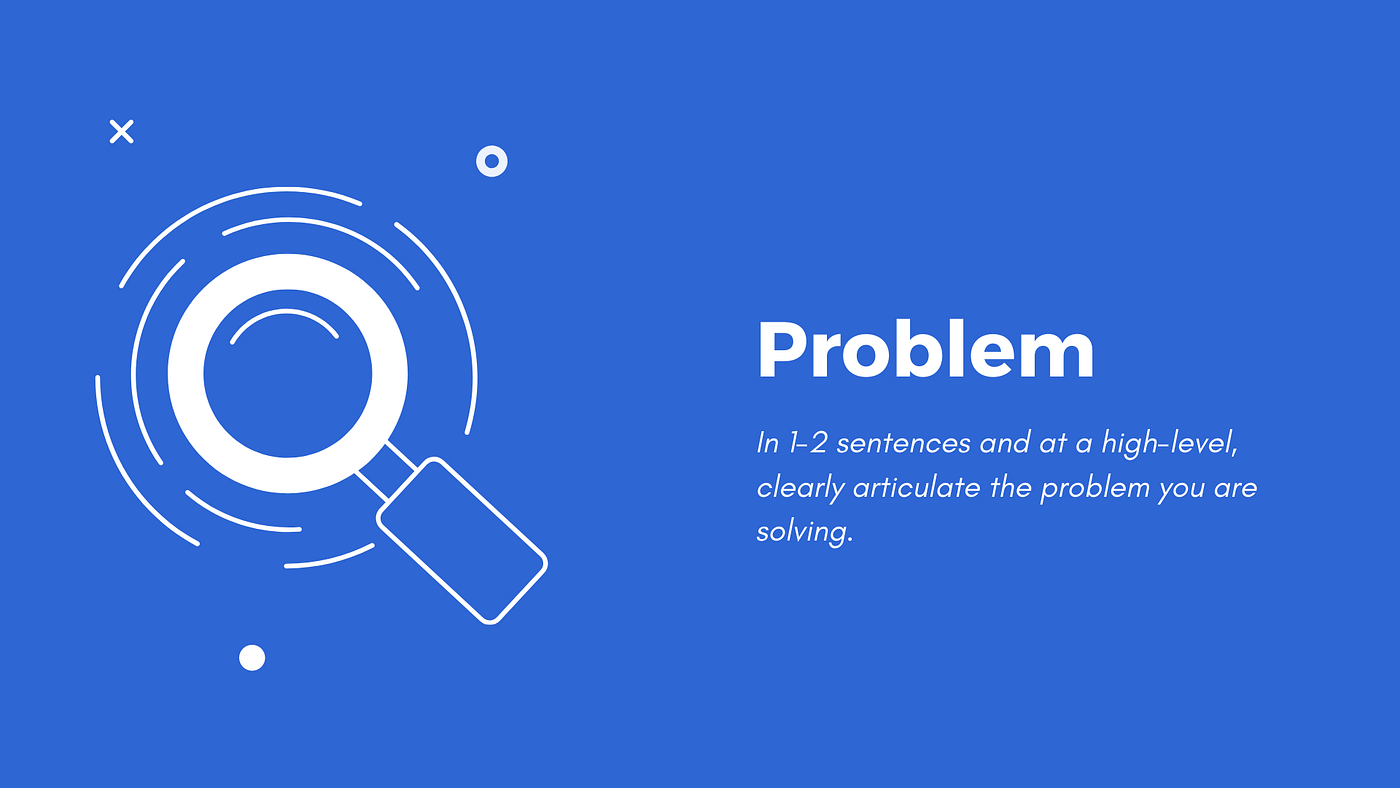Pitch Deck Pointers Part 2: The Problem Slide
Emily Close of AirTree Ventures gives her investor insights on how to nail the problem slide.

Welcome to the second instalment of our resource series, Pitch Deck Pointers. It’s our newest way of furthering the Innovation Bay mission of supporting founders along their journey from idea to IPO. If you missed Pitch Deck Pointers Part 1: Introduction, check it out. Our GM Sian shares general do’s and don’ts of pitching and covers what to include on the intro slide of a pitch deck.
For the rest of the slides in the pitch deck, we’re tapping our VC friends to give their expert input on how to compose an investor-friendly pitch deck. For each slide in the pitch deck, a different investor will lend their advice for what founders should and should not include on that slide. Today, Emily Close, Investment Manager at AirTree Ventures, will be giving her take on The Problem Slide. Let’s get into it.
Meet the VC: Emily Close of AirTree Ventures

I’m Emily Close from AirTree VC and we back game-changing entrepreneurs across Australia and New Zealand who are building enduring businesses. I spend my days listening to a founder’s vision for the future, diving deeper into various investment opportunities and supporting our portfolio companies across a number of areas including business plans, fundraising strategies, and profile building.
Now that we’ve been properly introduced, Emily is going to take us through what the problem slide’s purpose is, common mistakes to avoid, and her top pitch tip.
The Problem Slide

The purpose of the problem slide and why it’s important to investors
We (investors) are looking to back teams that are solving a pain point around which a very widespread set of customers are desperate for a solution. –EC
Common mistakes made on the problem slide
A common mistake is not showing how your customers are deeply affected by the problem. Investors love hearing that they’ve been actively looking for a solution for a long time, but haven’t been able to find something suitable… until now! In a pitch, customer references are typically some of the most powerful hooks. –EC
Emily’s top pitch tip
Remember to take on the role of a story-teller — we love hearing about the origin of the business (what was behind the itch!), the grind and the journey so far (first customers, first employees, competitor interactions), and then the vision of where you think you can take the business in the next 12 months and the next decade! –EC
Next up:
- Part 3. The Solution Slide featuring Hannah Field of Tempus Partners
- Part 4. The Market Slide featuring Alon Greenspan of Jelix Ventures
- Part 5. The Unfair Advantage Slide featuring Benjamin Chong of Right Click Capital
- Part 6. The Competition Slide featuring Hugh Bickerstaff of Investible
- Part 7. The Business Plan Slide featuring Kylie Frazer of Eleanor Venture
- Part 8. The Traction Slide featuring Dan Gavel of Black Sheep Capital
- Part 9. The Team Slide featuring Tip Piumsomboon of Blackbird Ventures
- Part 10. The Ask Slide featuring Georgina Turner of Tidal Ventures
Disclaimer: At the end of the day, this series is just a guide and should not be taken as gospel. Just as every business is unique, every slide deck should be unique. While the general order and number of slides we’ll use in the series is a good jumping-off point, perhaps a few more or fewer slides or a completely different sequence would better fit your company’s story.